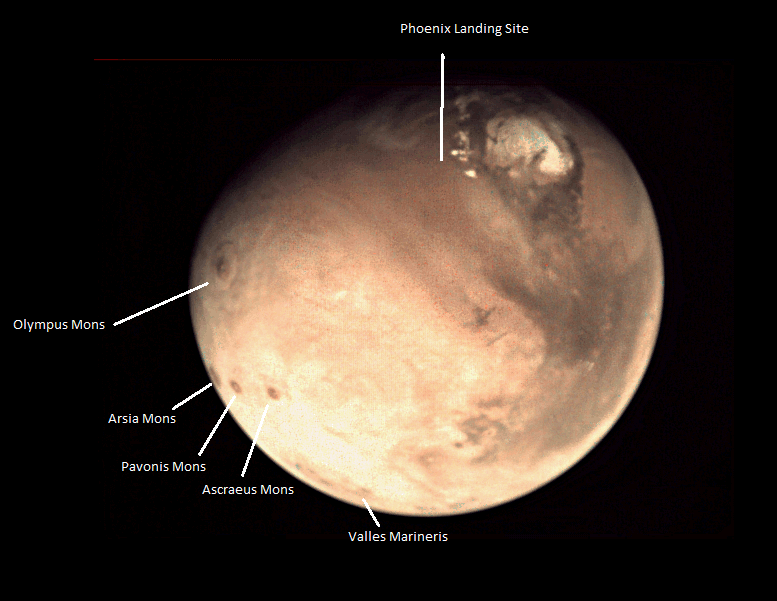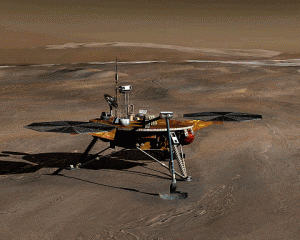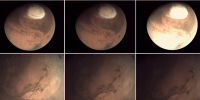Today’s post contributed by Mars Express operations engineer Simon Wood – Ed.
Here in our latest Mars Webcam images taken yesterday, 4 June, we have not only captured more shots of the northern polar cap and what seems to be further dust/cloud formations around the pole, we have also snapped some of the biggest geological features on the planet.
In this image, we have all three volcanoes that make up the Tharsis mountains.
These three volcanoes dwarf anything found on Earth, ranging from 14 to 18 km in height. To put this into perspective, the tallest volcano on Earth is Mauna Loa in Hawaii, which only reaches 9 km above the ocean floor.
However, the Tharsis mountains are themselves dwarfed by the largest volcano on the Red Planet (and indeed in the solar system), Olympus Mons, which has an approximate height of a staggering 25 km!
The favourable lighting conditions in yesterday’s observation enabled the entire base of the volcano to be visible and if you look closely you can even make out the crater. Olympus Mons covers an area of around 300 000 square kms, which to give some indication of the scale, would cover most of France.
We also just see the edge of the ‘Grand Canyon of Mars’ the Valles Marineris running along the limb of the planet (hopefully we’ll have more on that in a forthcoming observation).
And here’s a very cool Valles Marineris fly-through video:
One further item we’ve tagged in our image is the landing site of NASA’s Phoenix spacecraft, the first spacecraft to send back science data from the Martian poles.
In May 2008, Mars Express provided communication relay support to Phoenix using MELACOM, our UHF radio, recording its radio signal during the entry, descent and landing phase (just as we would later do for Curiosity in 2012).
Some further relay tests were performed once it was successfully on the surface, with our last contact completed on 31 May 2008.
As usual all the images are available on the VMC flickr account: https://www.flickr.com/photos/esa_marswebcam/





Discussion: no comments